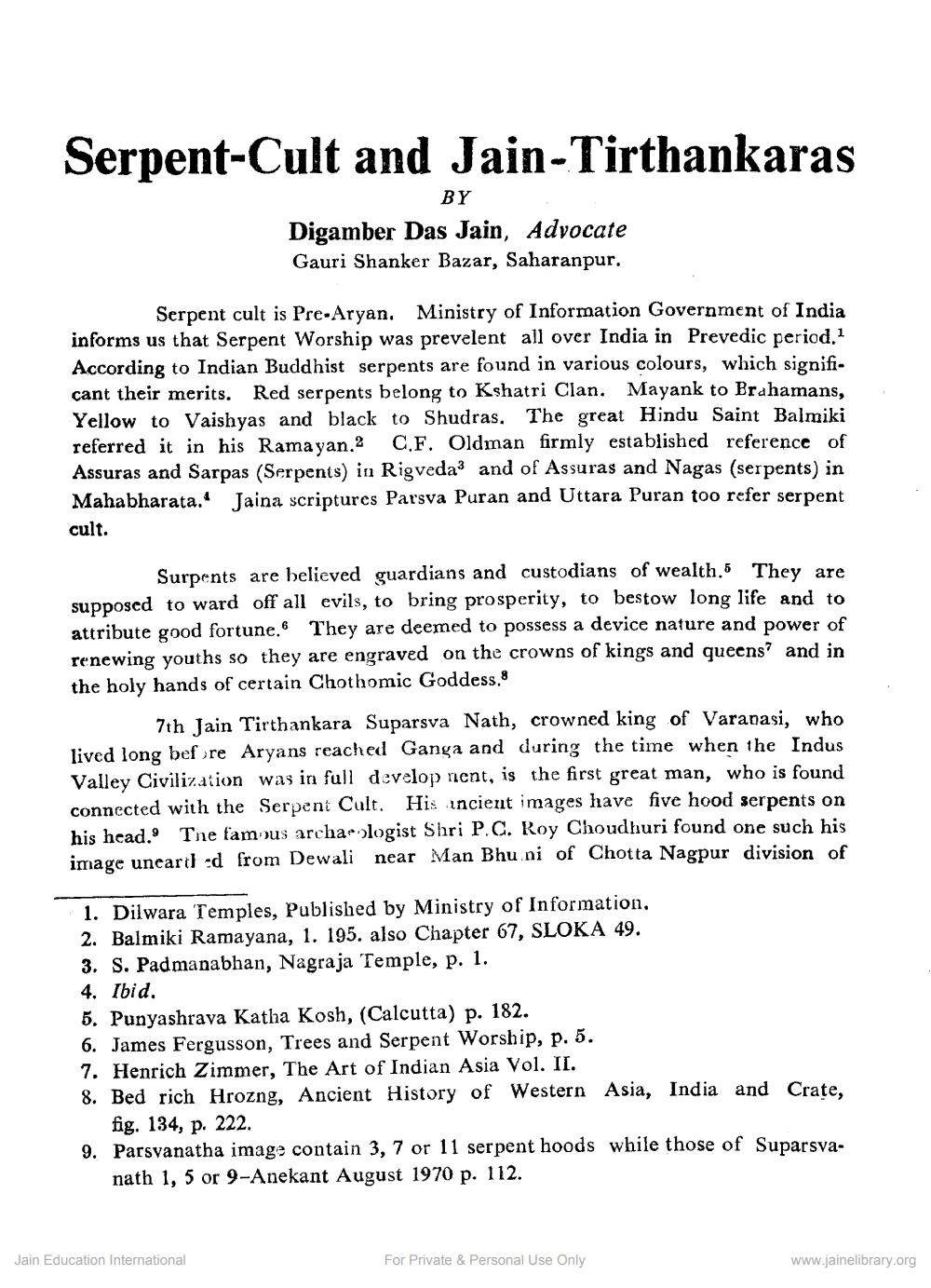________________
Serpent-Cult and Jain-Tirthankaras
BY
Digamber Das Jain, Advocate Gauri Shanker Bazar, Saharanpur.
Serpent cult is Pre-Aryan. Ministry of Information Government of India informs us that Serpent Worship was prevelent all over India in Prevedic period.2 According to Indian Buddhist serpents are found in various colours, which significant their merits. Red serpents belong to Kshatri Clan. Mayank to Brahamans, Yellow to Vaishyas and black to Shudras. The great Hindu Saint Balmiki referred it in his Ramayan.2 C.F. Oldman firmly established reference of Assuras and Sarpas (Serpents) in Rigveda3 and of Assuras and Nagas (serpents) in Mahabharata." Jaina scriptures Parsva Puran and Uttara Puran too refer serpent cult.
Surpents are believed guardians and custodians of wealth. They are supposed to ward off all evils, to bring prosperity, to bestow long life and to attribute good fortune. They are deemed to possess a device nature and power of renewing youths so they are engraved on the crowns of kings and queens and in the holy hands of certain Chothomic Goddess.8
7th Jain Tirthankara Suparsva Nath, crowned king of Varanasi, who lived long befre Aryans reached Ganga and during the time when the Indus Valley Civilization was in full develop nent, is the first great man, who is found connected with the Serpent Cult. His incient images have five hood serpents on his head. The famous archaeologist Shri P.C. Roy Choudhuri found one such his image unearthed from Dewali near Man Bhu ni of Chotta Nagpur division of
1. Dilwara Temples, Published by Ministry of Information, 2. Balmiki Ramayana, 1. 195. also Chapter 67, SLOKA 49. 3. S. Padmanabhan, Nagraja Temple, p. 1. 4. Ibid. 5. Punyashrava Katha Kosh, (Calcutta) p. 182. 6. James Fergusson, Trees and Serpent Worship, p. 5. 7. Henrich Zimmer, The Art of Indian Asia Vol. II. 8. Bed rich Hrozng, Ancient History of Western Asia, India and Crate,
fig. 134, p. 222. 9. Parsvanatha image contain 3, 7 or 11 serpent hoods while those of Suparsva
nath 1, 5 or 9-Anekant August 1970 p. 112.
Jain Education International
For Private & Personal Use Only
www.jainelibrary.org




